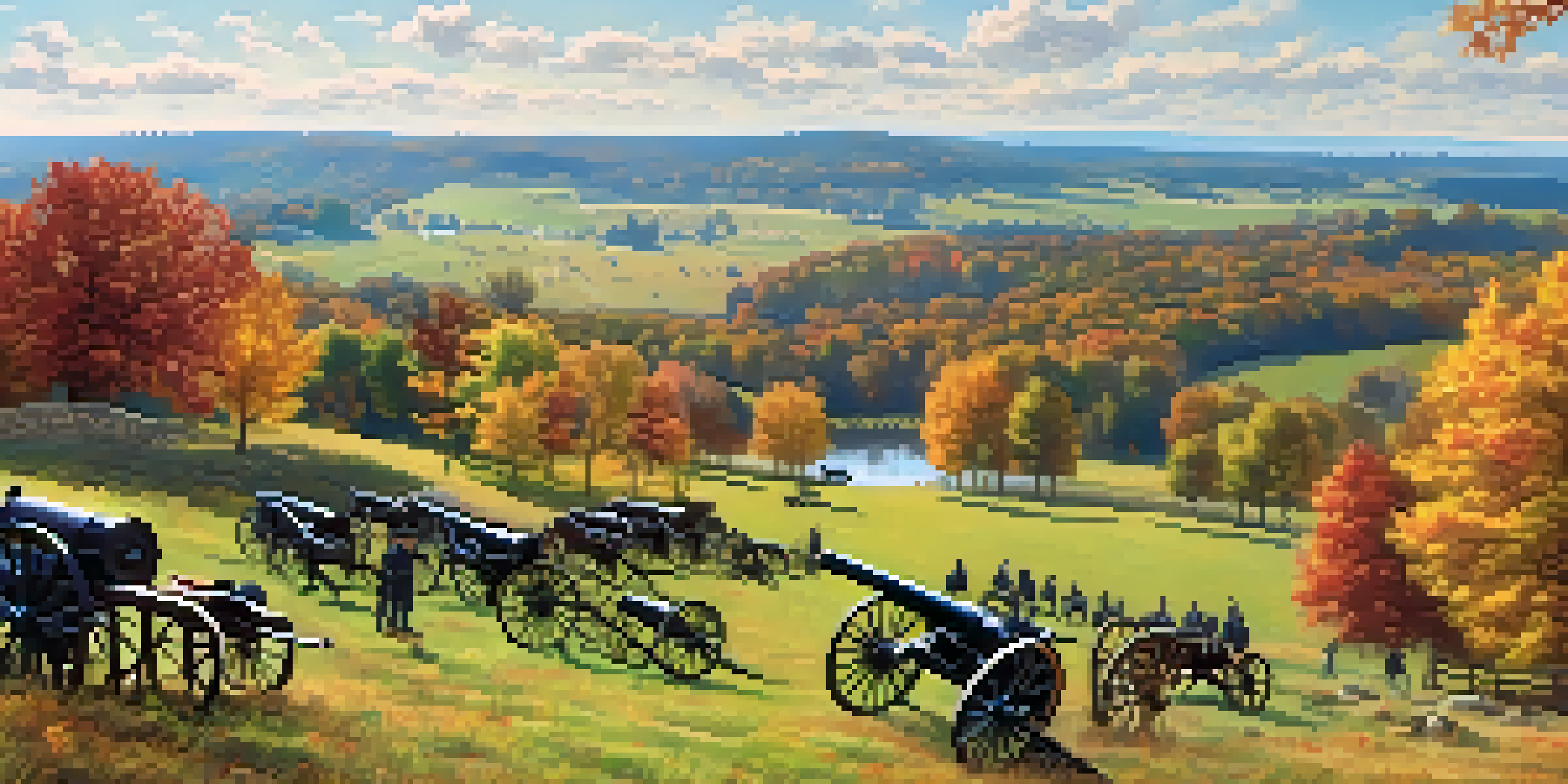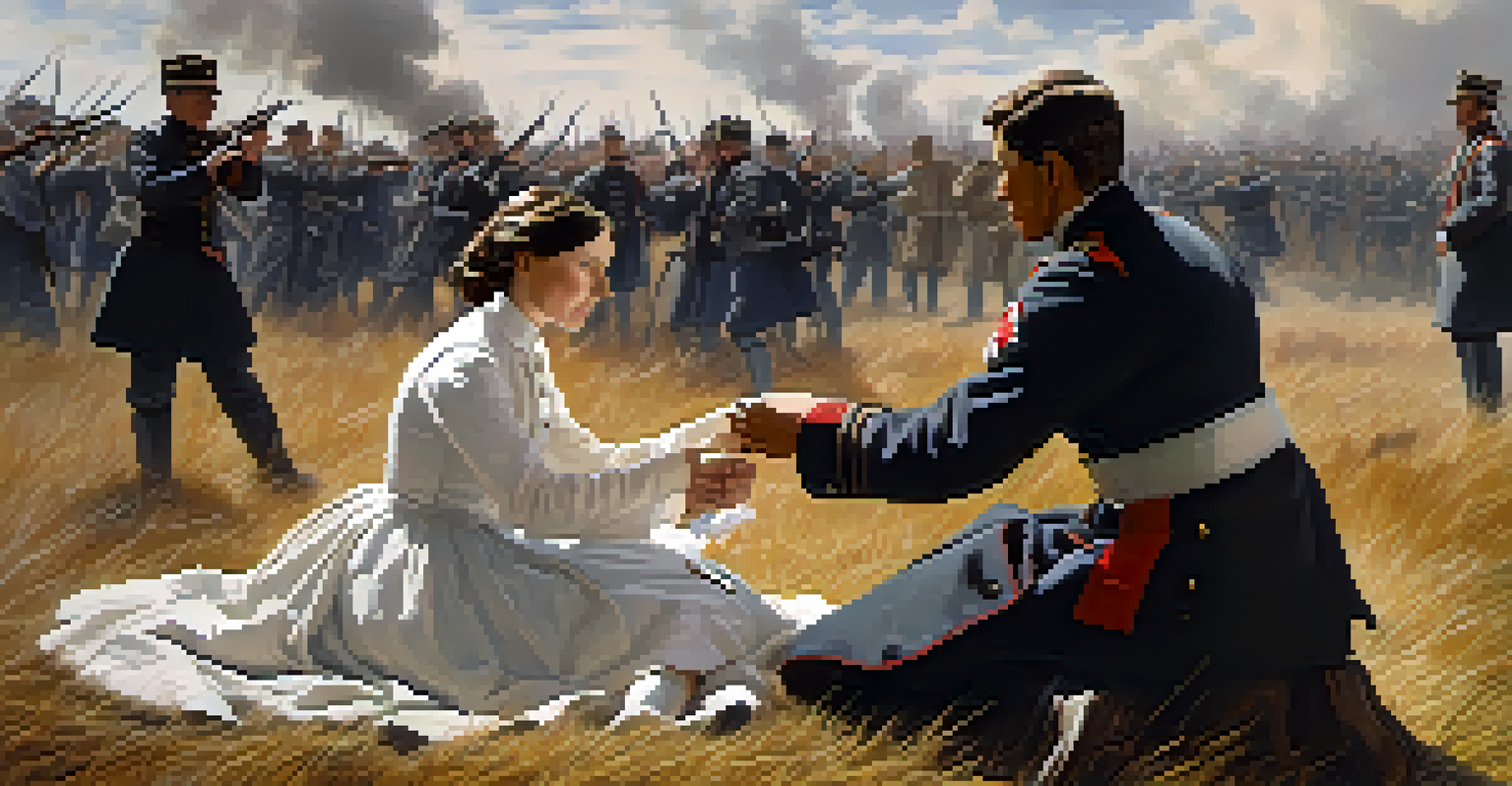Exploring the Impact of the Civil War at Antietam Battlefield

The Historical Significance of Antietam Battlefield
Antietam Battlefield stands as a pivotal site in American history, marking one of the bloodiest days in the Civil War. On September 17, 1862, this Maryland locale witnessed fierce combat between Union and Confederate armies, resulting in over 22,000 casualties. Its significance lies not only in the sheer scale of the battle, but also in its timing, occurring just before President Lincoln issued the Emancipation Proclamation.
The fiercest part of the battle was the morning of the 17th, but the real battle was not over until the end of the war.
The battle was a critical turning point that halted Confederate General Robert E. Lee's first invasion into the North. This Union victory, albeit costly, provided a morale boost for the North and helped solidify the Union's resolve to continue the fight. The outcome at Antietam also influenced international perceptions, dissuading Britain and France from recognizing the Confederacy.
Today, Antietam serves as a reminder of the sacrifices made during this tumultuous period, with its landscape preserved to honor those who fought. Visitors can walk the same grounds where soldiers bravely faced each other, connecting with the past and understanding the deep scars left on the nation.
The Human Cost: Casualties and Impact
The staggering human cost of the Battle of Antietam cannot be overstated. With more than 22,000 soldiers killed, wounded, or missing, the battlefield became a haunting testament to the brutality of war. Families were torn apart, and entire communities mourned the loss of their young men, leaving lasting scars on the American psyche.

Following the battle, the grim reality of the casualties prompted immediate humanitarian efforts. Volunteers and medical personnel flooded the area to tend to the wounded, leading to the establishment of makeshift hospitals. These efforts not only highlighted the dire conditions of war but also laid the groundwork for modern battlefield medicine.
Antietam's Role in Emancipation
The Battle of Antietam was crucial in leading to the Emancipation Proclamation, reframing the Civil War as a fight for human rights.
The impact of such a high casualty rate was felt long after the smoke cleared. Many soldiers returned home physically and emotionally scarred, contributing to a growing recognition of the need for veteran support and care. The echoes of Antietam's violence continue to resonate today, reminding us of the profound sacrifices made for freedom.
Emancipation and Its Broader Implications
The Battle of Antietam was instrumental in paving the way for the Emancipation Proclamation. President Lincoln, seeking a strategic victory to announce the proclamation, found that moment at Antietam. The proclamation declared that all enslaved people in Confederate territory would be set free, altering the war's moral compass.
Those who cannot remember the past are condemned to repeat it.
This shift not only aimed to weaken the Confederate war effort but also reframed the conflict as a fight for human rights. The moral implications of emancipation resonated throughout the nation, igniting passions among abolitionists and reshaping public opinion in the North. It became clear that the Civil War was about more than just preserving the Union.
The ramifications of this proclamation extended beyond the battlefield. It encouraged thousands of African Americans to enlist in the Union Army, adding strength to its ranks and furthering the cause of freedom. The legacy of this momentous decision continues to influence discussions around race and equality in America today.
Tourism and Preservation Efforts at Antietam
Today, Antietam Battlefield attracts thousands of visitors each year, eager to learn about its rich history. As a preserved national park, it offers educational programs, guided tours, and reenactments that bring the events of 1862 to life. These experiences serve not only to educate but also to honor the memory of those who fought.
Preservation efforts are crucial in maintaining the integrity of the battlefield. Organizations like the National Park Service work tirelessly to protect the land, ensuring that future generations can experience the profound history it holds. This commitment to preservation reflects a broader recognition of the importance of remembering our past.
High Casualties' Long-Lasting Impact
The staggering casualties at Antietam highlighted the brutal reality of war, prompting humanitarian efforts and a need for veteran support.
Visitors to Antietam can walk the hallowed ground where soldiers once fought, offering a tangible connection to history. As they explore the landscape, they gain a deeper understanding of the sacrifices made and the lessons learned, fostering a sense of reverence for the events that shaped the nation.
Personal Stories: Voices from the Battlefield
Every battle has its heroes and stories, and Antietam is no exception. Accounts from soldiers, medical personnel, and civilians provide a haunting glimpse into the experiences of those who lived through the conflict. These narratives not only tell of bravery and sacrifice but also reveal the personal toll of war on families and communities.
One poignant story is that of Clara Barton, a nurse who tended to the wounded at Antietam. Her dedication to caring for soldiers led her to found the American Red Cross, forever changing the landscape of humanitarian aid. Such individual tales remind us that behind the statistics of war are real people with hopes, fears, and dreams.
Sharing these personal stories enriches our understanding of the Civil War and its impact. They remind us that history is not just a series of dates and events but a tapestry woven from the lives of those who lived it. As we reflect on these voices, we honor their memories and the lessons they impart.
Cultural Representations of Antietam
The Battle of Antietam has inspired countless artistic representations, from paintings to literature. These works capture the essence of the struggle and sacrifice that defined the conflict. Artists and writers have sought to convey the emotional weight of the battle, bringing its story to life for new generations.
One of the most famous paintings, 'The Battle of Antietam' by artist Peter Rothermel, depicts the chaos and intensity of the fighting. Such visual representations serve not only as historical documentation but also as powerful reminders of the human experience during the war. They evoke empathy and encourage reflection on the cost of conflict.
Preservation of Antietam's Legacy
Today, Antietam Battlefield serves as a preserved national park, honoring the sacrifices made while educating visitors about its historical significance.
Cultural representations also play a vital role in shaping public perception of the Civil War. By engaging with these artistic interpretations, we can better understand the complexities of the battle and its aftermath. They invite us to explore the themes of courage, sacrifice, and resilience that continue to resonate in our society.
Lessons from Antietam: Reflecting on History
As we explore the impact of the Civil War at Antietam, we are reminded of the lessons history imparts. The sacrifices made during this battle serve as a stark reminder of the importance of unity and understanding in a divided nation. Reflecting on these events encourages us to consider our own roles in fostering peace and reconciliation.
Antietam also highlights the need for empathy in the face of conflict. The stories of those who fought remind us that behind every battle are human lives, each with their own stories and struggles. Understanding these narratives helps cultivate compassion and a commitment to preventing future conflicts.

Ultimately, the legacy of Antietam extends beyond its historical significance. It challenges us to learn from the past, to honor those who came before us, and to strive for a more just and equitable world. By engaging with this history, we not only preserve the memories of those who fought but also inspire future generations to continue the pursuit of freedom and equality.